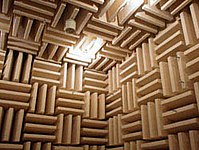
Photo from wikipedia
Abstract The reduction of noise in vehicle body components is one of the main themes of the acoustics profession for vehicles. At high vehicle cruising speeds, the predominant contributor to… Click to show full abstract
Abstract The reduction of noise in vehicle body components is one of the main themes of the acoustics profession for vehicles. At high vehicle cruising speeds, the predominant contributor to wind noise occurs via the sealing system. Accordingly, understanding the sound transmission loss (STL) through a vehicle’s sealing system is an essential engineering context for reducing interior wind noise levels. The STL through a sealing system is affected by the material, cross-section design of the profiles, overall design of the sealing system and the dynamics of the system. In this study, a brief method is described to explore the acoustic properties of vehicle door seals. Material characterization is performed both for hyperelastic and viscoelastic regions and realized using mechanical tests. The method described for studying the STL covers an analytical approach, numerical analysis, and, finally, experimental validations for several door seals, which form a major part of the sealing system located around a passenger door (closing all direct noise paths and attenuating noise from the body). Finally, the effects of fundamental parameters on the sound transmission properties are presented.
Journal Title: Applied Acoustics
Year Published: 2020
Link to full text (if available)
Share on Social Media: Sign Up to like & get
recommendations!